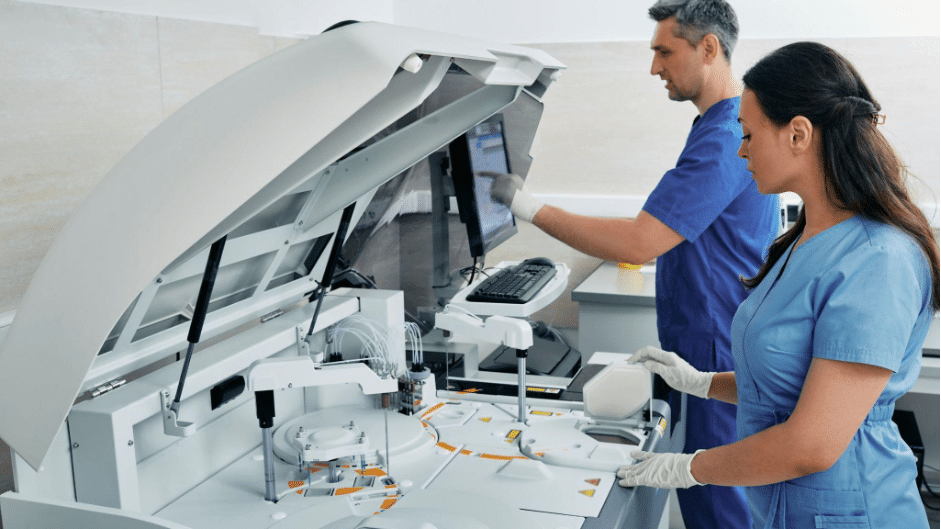Hospitals and healthcare facilities rely heavily on their laboratory equipment to diagnose and treat patients. Therefore, it is critical that laboratory managers and technicians keep laboratory inventory up to date and in good working order. However, managing and maintaining a hospital lab inventory can be a challenging task, especially for those who are new to the field. Managing inventory in a hospital lab can be a challenging task due to various factors such as the number of items to track, the frequency of usage, and the need for strict control over the inventory to ensure compliance with regulations.

Hospital lab inventory management is a critical component of ensuring efficient and effective laboratory operations. There are several reasons why inventory management matters in hospital labs, including:
1. Ensuring Quality Patient Care
2. Cost Control
3. Regulatory Compliance
4. Operational Efficiency
Hospital lab inventory management is essential for ensuring quality patient care, controlling costs, maintaining regulatory compliance, and improving operational efficiency. Effective inventory management practices can help hospital labs optimize their inventory levels, prevent supply shortages, and reduce waste, ultimately improving the overall quality of care provided to patients.
In this article, we will discuss some tips and tricks that can help you successfully navigate the challenges of hospital laboratory inventory.
Understand the Importance of Inventory Management
First and foremost, it is essential to understand the importance of inventory management in hospital labs. Hospital labs deal with a vast array of inventory, including lab equipment, reagents, consumables, and more. Proper inventory management ensures that the lab has the necessary supplies to conduct tests efficiently and effectively.
In addition, managing inventory can also help hospitals save money. Overstocking on inventory can lead to waste and unnecessary expenses, while understocking can lead to delays in patient care and increased costs due to expedited shipping fees.
Implement an Inventory Management System
One of the most effective ways to manage hospital lab inventory is to implement an inventory management system. A good inventory management system allows real-time tracking of inventory levels, enables automatic reordering when inventory levels reach a certain threshold, and provides a detailed inventory summary.
Several inventory management software options are available in the market, including cloud-based solutions, which offer several benefits, such as accessibility from any location, automatic data backups, and data security.
Train Staff on Inventory Management Processes
Properly trained staff is critical to the success of inventory management in hospital labs. All lab personnel should be well-versed in the inventory management system and trained on best practices for managing inventory. Training should cover areas such as proper storage of inventory, inventory tracking, and timely reordering.
In addition, lab personnel should also be aware of the importance of accurate inventory management and how it impacts patient care. By providing their staff the tools and knowledge they need to manage inventory effectively, hospitals can improve patient care outcomes and reduce the risk of errors.
Conduct Regular Inventory Audits
Another essential component of successful hospital lab inventory management is conducting regular inventory audits. Regular audits help identify any discrepancies between inventory records and actual inventory levels, allowing hospitals to address issues before they become significant problems.
Audits should be conducted regularly, preferably quarterly or semi-annually, depending on the size of the laboratory and the volume of inventory. The audit process should include a physical inventory count, verification of inventory records, and resolution of any discrepancies found.
Implement Just-In-Time Inventory Management
Just-in-time inventory management is an inventory reduction technique that orders inventory only when it is needed. This method can help hospitals save money by reducing overstocking and waste.
To implement just-in-time inventory management, hospitals should track inventory usage trends and establish a reorder point that allows enough time for inventory to be delivered before it is needed. This approach requires careful planning and coordination between lab personnel and suppliers to ensure timely delivery of inventory.
Utilize Barcode Technology
Barcode technology can also be used to streamline inventory management in hospital labs. Barcode labels can be affixed to inventory items, enabling quick and accurate tracking of inventory levels and usage. Barcode technology can also be integrated with inventory management software to automate the inventory tracking process.
By utilizing barcode technology, hospital labs can improve inventory accuracy, reduce errors, and save time and money.
Conclusion
Managing inventory in hospital laboratories can be a difficult task, but with the right tools and techniques, it can be done efficiently and effectively. Proper inventory management ensures that hospitals have the necessary supplies to provide timely and accurate patient care while also saving money.
Implementing an inventory management system, training staff on inventory management processes, conducting regular inventory audits, implementing just-in-time inventory management, and utilizing barcode technology are all essential components of successful hospital lab inventory management.
With these tips and tricks, hospitals can streamline their inventory management processes, reduce errors and improve patient care outcomes. It is also important to stay up to date on inventory management best practices and industry trends.
As technology continues to advance, hospitals should consider implementing newer technologies such as artificial intelligence and machine learning to further streamline inventory management processes and improve accuracy.
In summary, navigating medical lab inventory challenges requires a comprehensive approach that includes implementing an inventory management system, training staff, conducting regular audits, utilizing just-in-time inventory management, and utilizing barcode technology. By implementing these strategies, hospitals can optimize their inventory management processes, improve patient care outcomes, and save money in the process.

